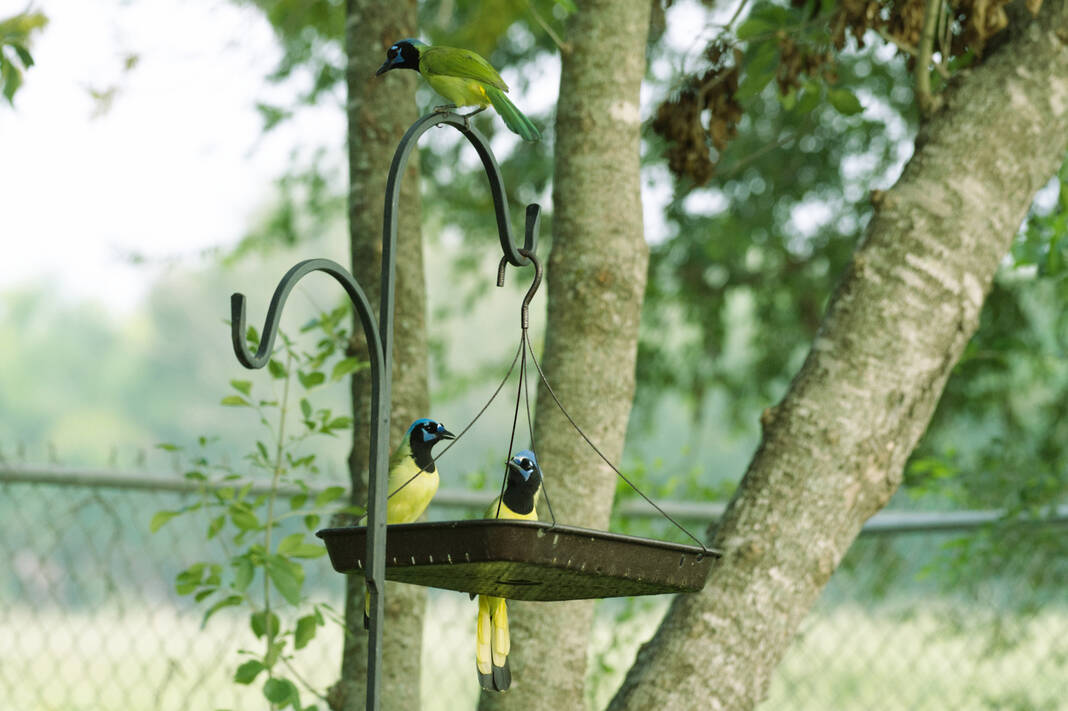
Bird behavior in the Rio Grande Valley continues to evolve, and much of the direction is toward co-existing more intimately with human neighbors.
Dove hunters have remarked, sometimes dourly, on the migration of the white-winged dove from their historic massive field flocks to becoming a city bird, now common at feeders, and un-huntable.
Likewise, the green jay is picking up stakes in the wilder parts of the region to become much more common, and comfortable, within city limits; parrots, too, with several species common from Brownsville to McAllen.
Science has a word for it, because that’s what science does, and the word is synanthropic. It means a plant or animal species which has adapted to spaces lived in or frequented by humans.
Some synanthropic avian species have names pretty descriptive of their symbiotic relationship with us, like the house sparrow and barn swallow.
“Certainly with white-winged doves, there is some period and I’m not sure the exact time when it happened, but there was a big shift or maybe it was more of a slow increase. But over time white winged doves have really increased their usage of particularly suburban habitats,” said John Brush, urban ecologist at Quinta Mazatlan in McAllen.
“They like being in neighborhoods. Based off of my research at the university where I was getting my master’s, they seem to particularly like neighborhoods with a lot of live oak trees,” he added. “Certainly that is a species that has very much become citified.”
The magnificently colored green jay, too, is becoming a more common sight in urban areas.
“For green jays, they do occur in cities, but they tend to be in areas that have more trees in them,” Brush said. “So you’re probably not going to see them in a really highly developed, mostly concrete, not-a-whole-lot-of-trees area.
“I wouldn’t expect to see a green jay at like Nolana and 10th Street (McAllen), for instance,” he added. “But you will see them in neighborhoods in McAllen and Edinburg and Mission and Brownsville that have more trees around.”
Some ornithologists believe as many as 25 percent of all avian species in the United States have become synanthropic species, happily chirping away in urban areas which probably have more food sources and almost certainly fewer predators.
“Two species that people really tend to enjoy seeing are green parakeets and red-crowned parrots,” Brush said. “You will pretty much only see those two species in the Valley in towns and in cities. I can probably count on one hand how many times I’ve seen a red-crowned parrot at like a state park or a national park or anything like that.”
There are probably a half-dozen or more parrot species in the Valley, and it’s nearly 100-percent certain they started as escaped pets. Nevertheless, several species are thriving and all are found in urban areas.
“The main ones that are breeding on their own in the area, so they have a self-sustaining population, are the red-crowned parrot, the green parakeet and probably you could include the yellow-headed parrot in there, and there might be a few violet-crowned parrots in there,” Brush said. “One that I know for sure that is breeding on its own in the Valley is the monk parakeet, but one of the only places to really see them is down in the City of Hidalgo.”
There are even some less-likely suspects living amongst us.
“Another example would be a yellow-crowned night heron, just to throw a little bit if diversity into the mix,” Brush said. “That’s one that has definitely started to breed a little bit more in town here in the Valley.”
“There used to be nesting site at Valley Nature Center in Weslaco, but now folks are seeing them in their yards,” Brush said. “I know they bred in a neighborhood near Mazatlan here in McAllen and have been seen in other areas, too. That heron is starting to do well in urban areas.”
Brush says the bird species that do well shoulder-to-shoulder with humans tend to be the generalist species, like the green jay, which has a pretty wide-ranging diet and a tolerance for different habitats.
“If you are a species that’s able to adapt to this sort of landscape, this sort of land usage, then great for you. There’s certainly a lot of it around, and there’s going to be more of it in the future,” Brush said.



